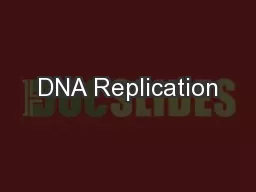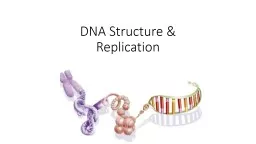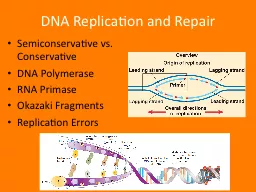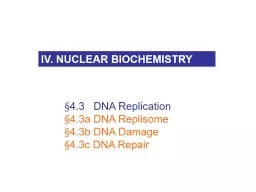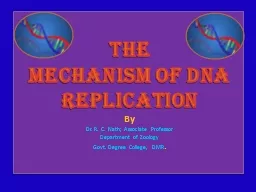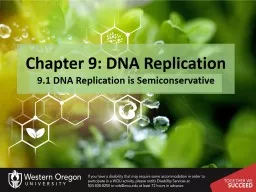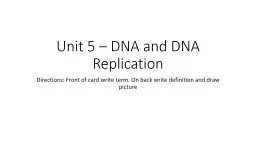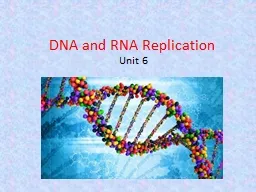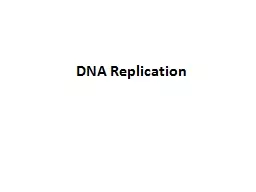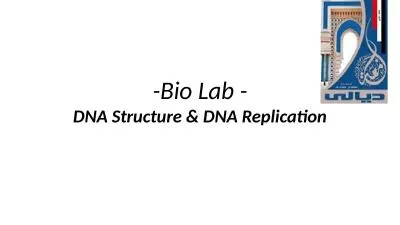PPT-DNA Replication
Author : natalia-silvester | Published Date : 2017-07-02
Chapter 72 Processing of Genetic Material What is DNA Replication The process by which the DNA within a cell makes exact copies of itself Balance of speed and accuracy
Presentation Embed Code
Download Presentation
Download Presentation The PPT/PDF document "DNA Replication" is the property of its rightful owner. Permission is granted to download and print the materials on this website for personal, non-commercial use only, and to display it on your personal computer provided you do not modify the materials and that you retain all copyright notices contained in the materials. By downloading content from our website, you accept the terms of this agreement.
DNA Replication: Transcript
Download Rules Of Document
"DNA Replication"The content belongs to its owner. You may download and print it for personal use, without modification, and keep all copyright notices. By downloading, you agree to these terms.
Related Documents

